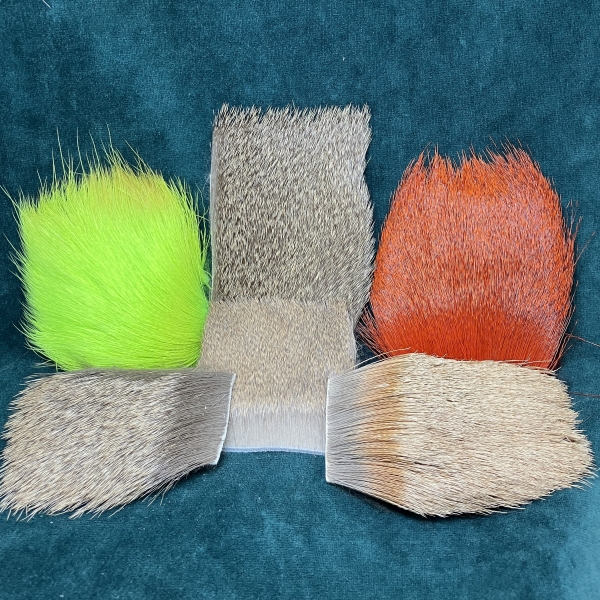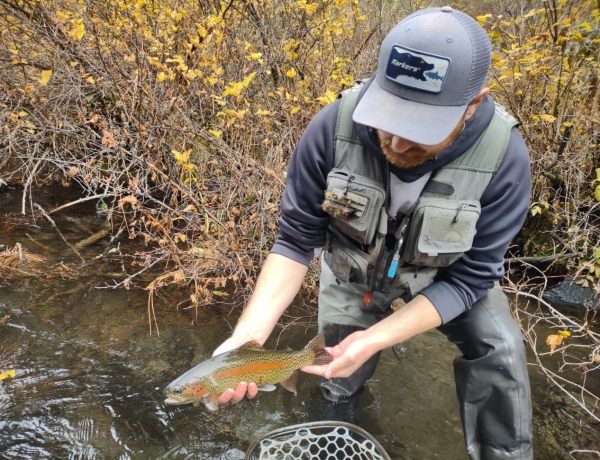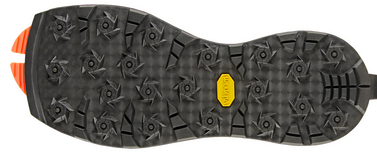Two-handed casting has many uses within the realm of flyfishing, and with the diversity of fishing opportunities in central Oregon, you can find all sorts of scenarios to employ a switch or spey rod in. At the shop, we get people coming in all the time at the beginning of steelhead season that just bought a used two handed setup for what they thought was a good deal, only for us to have to inform them that the line doesn't match, or the tips are mismatched and won't cast like they should, or that there's simply one entire facet of the line setup missing. Special shout out to the guy who sold one of our customers who is new to the spey game just a shooting head and a leader with no backing, because that would have ended in tragedy if he got on the water before checking it out. This is not to embarrass anyone who isn't familiar with the setups, just to highlight the importance of having the right gear, especially if you aren't familiar with how it should be. At one time, all of us here at the shop had to learn this stuff too, even though it may seem like we're really smart all the time. Right? Anyways...It all boils down to the fact that we want to see you be successful on the water, and you can't do that with a mismatched outfit.
Spey Rods
Spey rods are pretty much exclusively used for swinging, and mostly for steelhead. In certain situations on the Metolius they can be used for streamers, but pretty much all of the time a switch rod will work just fine out there. Where the spey rods really shine in central Oregon are covering long runs for steelhead. Typically 12' and up, they are longer and can throw more weight easier than switch rods can. The basic outline of a swinging setup would be (after the reel and rod of course):
Backing - Pretty self-explanatory. Same stuff as the backing on your trout reel, but usually stronger and more of it.
Running line - This is a thin line, made out of something smooth that will shoot through the guides easily. The running lines we sell also have a slightly thicker section at the front of the line that makes the running line easier to grip, especially in cold weather conditions.
Shooting head - Shooting heads are designed to be the weight that the rod propels to cast your fly. The length, weight, and taper all vary depending on what spey rod you have and what application you're going to be using it for. The two types of shooting heads are Skagit, which are for heavier flies and sink tips, and Scandi, which are for lighter setups. The term Skagit originates from the Skagit River in Washington, where getting down and staying down in the heavy high gradient rivers of the Cascades is the name of the game. Scandi comes from Atlantic salmon rivers in (you guessed it) Scandinavia, where the rivers are wider and lower gradient, and people fish lighter setups that you can initiate a cast with more line out, increasing the time you're actually fishing your fly and decreasing the time spent stripping line in.
Tips - These are sections of line added on to the end of the shooting head with a loop to loop connection and can be anything from floating to super fast sinking. The length varies a bit from spey to switch rods, but the rule of thumb is that you want your shooting head/tip to be about 3x the length of your rod. For example, the spey rod we sell the most of is a 12"6' Redington Claymore. Three times 12'6" would be 37'6". We would then set you up with a Skagit Max Launch, which is 23 feet, and tips that are 15 feet, bringing the total length of your shooting head and tips to 38 feet. All tips that are the same length are the same grain weight, they just vary in their sink rate. The way they can do this is by varying the amount of tungsten powder they add in to the polymer coating of the tip. The more tungsten powder the tip has, the denser they are and the faster they will sink through the water column. From there, the leader goes off of the tips, and that also changes slightly depending on the application. Floaters take normal 9' leaders usually, and sink tips use shorter leaders to keep the fly closer to the depth of the sink tip.
Switch Rods
Switch rods in our neck of the woods are typically employed for nymphing for steelhead and bull trout, and sometimes swinging for those fish as well. They are less than 12' long, and have variety of line types made for them than spey rods do. The downside to switch rods is that by sacrificing length, you lose a bit of casting power so you won't be able to huck big sink tips with large flies quite as easily as a spey rod could. For example, you would use a switch rod on coastal steelhead rivers where the runs are shorter and don't require you to cover quite as much water as the straighter, wider rivers of the high desert such as the lower Deschutes or John Day. If you're nymphing, a switch rod is suitable pretty much anywhere for steelhead/bull trout in central Oregon since you're going to be fishing much closer in to yourself in most situations. There are specific nymphing lines for switch rods, with longer stouter heads for turning over large indicator rigs and more mendable midsections. The swinging setups could be the same as the ones described in the spey section, just a bit shorter and lighter. Another option for a switch (or even single hand rod if you wanted to swing with it) would be a Versitip line. A Versitip is basically a shooting head and running line integrated together. It also comes with four tips, a floater, an intermediate, a type 3, and a type 6. At the shop, we also throw in some custom tied sink tip leaders so that you can start fishing it right out of the box.
Got the setup but having trouble with the cast? We can help you with that! The Patient Angler just so happens to offer spey casting lessons, and as always, feel free to come in to the shop with any questions and we'll be happy to discuss them with you.


